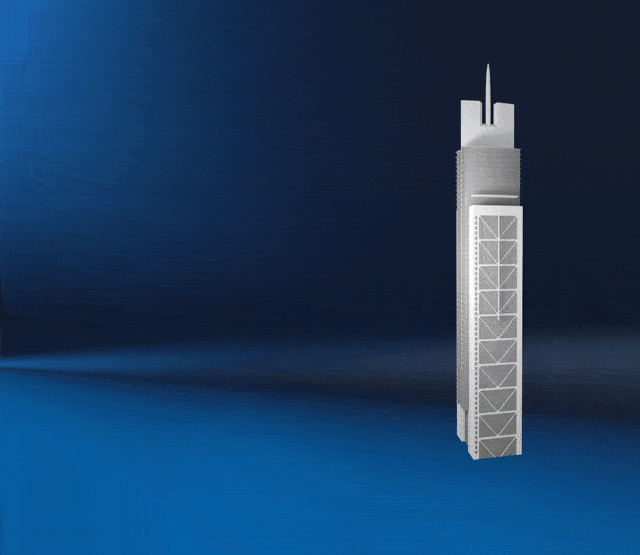Why CRE Experts Have a Cautiously Optimistic Outlook: Q&A on the State of Commercial Real Estate

We are currently in the longest cycle of economic expansion in US history, with transaction volume remaining strong relative to historic norms. While some believe a recession is impending, John Sullivan is looking at the commercial real estate (CRE) market with moderate optimism as he gears up for DLA Piper's 2019 Global Real Estate Summit on September 24th.
As the Chair of the US Real Estate Practice and the Co-Chair of the Global Real Estate Practice at DLA Piper, Sullivan manages the firm's 200 US real estate group and co-manages the firm's 500+ lawyer global real estate team. As someone with decades of experience in both the legal and business side of the CRE industry, he is keenly focused on the events and trends that impact that industry and on ways that DLA Piper's world-leading real estate practice can provide value-added advice to its real estate clients around the world.
Q: Would you describe your 12-month outlook for the US CRE market as bullish or bearish? Does this differ globally?
JS: I have a moderately bullish outlook on the US CRE market, but I believe it's a particularly difficult time to answer this question. Everybody knows that the current economic cycle is long by historic standards, and everyone is asking: "How much longer can this cycle go on?"
Beyond the somewhat simplistic analysis of the historic duration of economic cycles, there are headwinds and reasons for concern. Take the recent inversion of the yield curve - because the yield curve became negative before each recession since the 1970's, the recent inversion is certainly creating angst about whether a recession is looming. There are also concerns and uncertainties around trade wars, tariffs and Brexit.
On the other hand, if you look at real estate transactions in the US since the Global Financial Crisis, investment volume has remained healthy by historic norms. With a few exceptions, the commercial real estate market in the US is not over-built. Also, consumer confidence and consumer spending, both important drivers of the economy and CRE, remain near cyclical highs. Finally, there's a lot of capital (so-called dry powder) waiting to be deployed into CRE – a recent JLL report estimated this dry powder at US$331 billion – and if there is a pull-back in pricing, that could create a buying opportunity for some investors and stimulate investment activity.
Also, I think it's worth noting that an inverted yield curve could have a positive impact on CRE if it drives some bond investors who are seeking more yield out of bonds and into real estate.
Lastly, despite a recent pullback in foreign investment in US real estate, the US is still viewed as a safe haven for capital, and I think that CRE in the US will continue to benefit from offshore investment.
On a global basis, you really have to look at it by market/region. That said, earlier this year, a Deloitte survey of global real estate investors found that 97% planned on increasing their commitment to CRE over the next 18 months – respondents from the US led the pack, followed by Germany and Canada.
Q: What are some of the major trends facing the CRE industry, and which of those have the potential to materially disrupt the industry?
JS: There are several general trends facing the CRE industry, and a number of them either are already having, or will likely have, a disruptive impact.
In terms of general trends, I touched on much of that above – concerns about things such as an economic slowdown and the fallout from trade wars, tariffs and Brexit. It's very difficult to predict the impact of these types of events – remember that in the US we haven't had to deal with the impact of significant tariffs since the Smoot-Hawley Tariff Act in the 1930's!
PropTech has become, and will continue to be, a significant trend in CRE. PropTech venture capital investments have surged over the last few years – PropTech companies have raised US$14 billion so far this year, a 300% year over year increase.
Regarding potential disruptors, I think that most of them broadly fall under the banner of innovation and technology. For example, e-commerce has had a major impact on the industrial/logistics industry. Blockchain has the potential to dramatically change the way CRE is owned and the way it's traded. Autonomous vehicles could have a major effect on almost all types of CRE, including apartments, office buildings and, of course, parking facilities. Co-working and co-living companies are already having a disruptive impact.
Q: What trends or patterns have you found from over the past few years?
JS: Over the past 10 or 15 years, CRE has emerged as a true global asset class, with an estimated market value of US$228 trillion. For perspective, I think that is more than the value of all the stocks, shares and securitized debt combined and more than all the value of all gold that has ever been mined!
The real estate equity market used to be viewed primarily as a as geocentric business in which a local developer or operator would team up with a bank or life insurance company. Today, virtually all of the major institutional investors have significant allocations to real estate, and those allocations cross country lines.
In addition, the historic distinction between real estate developers and institutional real estate equity investors has diminished significantly, with many of the major real estate investors also being in the real estate development and management business – in other words, we are seeing vertical integration in CRE.
Lastly, there's a trend toward real estate being developed and managed to create a sense of place and an experience. Compared to the past, there is a greater emphasis on the overall experience of tenants, customers and the public – what's the experience when you walk in the door? How does the building fit into the neighborhood? What's the experience when you're outside of that building? It's a more holistic, consumer/customer-centric approach to real estate.
Q: Switching gears to focus on DLA Piper's Global Real Estate Summit, what sets it apart from other events in the industry?
JS: Our event is an exclusive, invitation-only summit that is limited to senior-level executives in the commercial real estate industry. We don't have sponsors at this conference, no one is paying to be on a panel, and no one is marketing themselves here. We intentionally leave DLA Piper lawyers off the agenda – it's all about the substance and the people in the industry. We always think about what's going on in the market and try to design and tailor our content to current trends and happenings in real-time.
Q: Are there any findings from this year's DLA Piper Real Estate State of the Market Survey that surprised you?
JS: While I can't share the specific data points yet, I was interested in responses to the market outlook question. With respect to general market sentiment, rather than simply asking people if they are bullish or bearish, this year we asked people to register their outlook on a scale of 1 to 10 (1 being the most bearish and 10 being the most bullish). With this approach, we're able to get a more accurate reading of how optimistic or apprehensive our respondents are about the CRE market. I was slightly surprised about the number of respondents who feel bullish. Given recent events like increased trade war tensions and the inversion of the yield curve, you can't help but wonder whether the responses would be different now.
Similarly, I was intrigued by the survey responses on industry disruptors and their impact in the upcoming 12 months. Survey respondents were less concerned about disruption in general than I would have predicted. I suspect that if the question were slightly more future looking, perhaps asking about potential disruption over the next 3 to 5 years, we would have seen more people predicting disruption.
